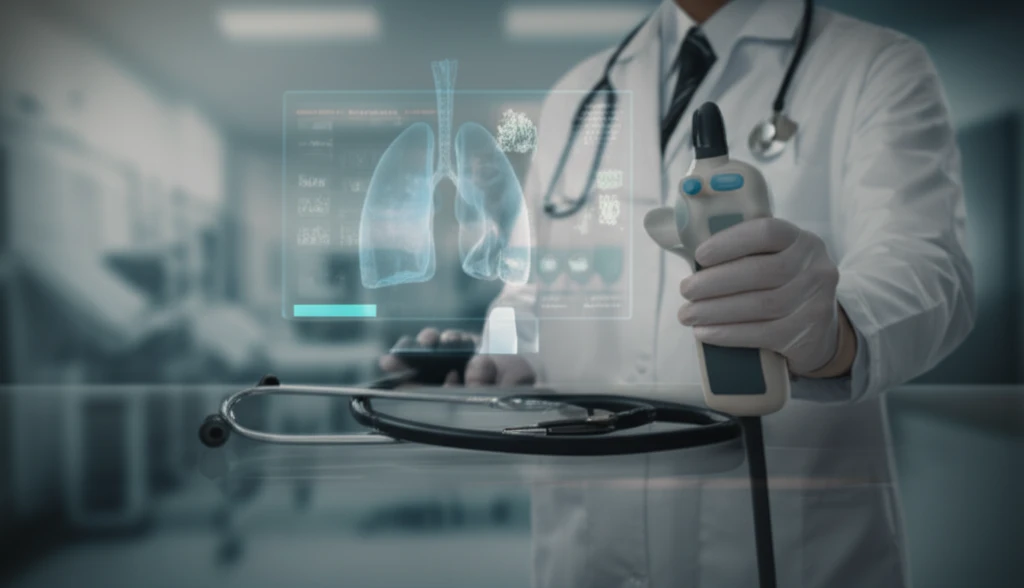
Lung Ultrasound: The Modern Stethoscope?
"Discover how point-of-care lung ultrasound is revolutionizing emergency and intensive care medicine, offering rapid and accurate diagnostics."
In emergency and intensive care settings, quick and accurate diagnoses are critical. Lung ultrasound (LUS) has emerged as a valuable tool, offering a rapid and non-invasive way to assess patients with respiratory distress and other critical conditions. Since the late 1980s, its use has steadily grown, revolutionizing how clinicians approach bedside diagnostics.
Traditional diagnostic methods often involve delays (waiting for lab results), patient transport (for X-rays or CT scans), or diagnostic uncertainty (relying on auscultation or chest X-rays). LUS overcomes many of these limitations, providing real-time information that guides immediate treatment decisions. The rise of point-of-care ultrasound (POCUS) devices has further accelerated the adoption of LUS in emergency departments and intensive care units.
This article explores the capabilities of LUS and addresses the question: could POCUS of the lung become the stethoscope of the 21st century? We'll delve into how LUS works, its advantages, and its applications in diagnosing various conditions, focusing on how it empowers clinicians to deliver faster and more effective care.
LUS: A Rapid Diagnostic Tool for Dyspnea and Shock

Dyspnea (shortness of breath) and shock are common and life-threatening conditions in emergency medicine. Identifying the underlying cause quickly is essential for initiating appropriate treatment. LUS offers a rapid means to detect or rule out potential causes when other diagnostic methods may be slower or less reliable.
- Speed and Availability: LUS provides immediate results at the bedside, eliminating delays associated with traditional imaging.
- Ease of Learning: LUS has a relatively short learning curve, making it accessible to a wide range of healthcare professionals.
- Repeatability: LUS can be easily repeated as needed to monitor changes in a patient's condition in real-time.
- Portability: Handheld ultrasound devices allow LUS to be performed at the bedside or even in pre-hospital settings.
- Patient Interaction: LUS allows for direct interaction with the patient during the examination.
- No Radiation: LUS does not involve ionizing radiation, making it safe for repeated use, especially in vulnerable populations like pregnant women and children.
- Cost-Effectiveness: LUS is a relatively inexpensive imaging modality.
- Guided Procedures: LUS can be used to guide procedures such as thoracentesis (removing fluid from the chest cavity).
The Future of Lung Diagnostics
LUS is transforming the way clinicians evaluate patients with respiratory problems in emergency and intensive care settings. Its rapid availability, ease of use, and diagnostic accuracy make it a valuable tool for a wide range of conditions.
While LUS offers significant advantages, it's important to acknowledge its limitations. It is operator-dependent, and image interpretation requires training and experience. In some cases, LUS may not be able to visualize deep structures or differentiate between certain conditions. It serves as a complement to other diagnostic modalities, like traditional radiography.
With the continued development of smaller, more portable ultrasound devices and increasing training opportunities, LUS will likely become even more widespread in the future. Its potential to improve patient care is undeniable, solidifying its place as a crucial diagnostic tool and perhaps, indeed, the stethoscope of the 21st century.
